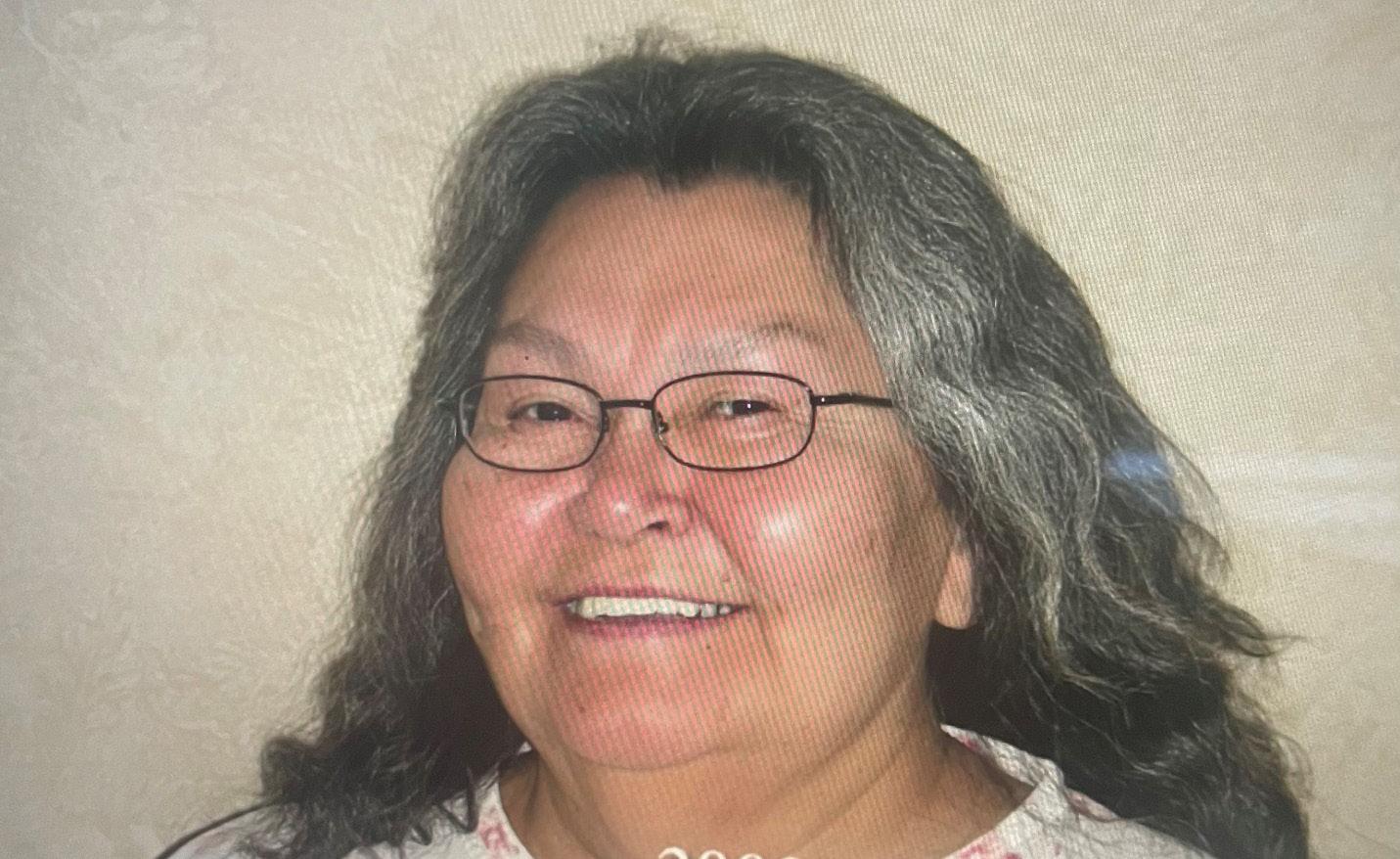
5 minute read
Tongue trooper
teaching career working for Indian Affairs for 11 years beginning in 1967, it was in English.
The establishment of the Cree School Board in 1978 began a new era for integrating the Cree language in the classroom. As there were no written teaching materials available for Cree dialects, Salt and her colleagues consulted with other Indigenous school boards across Canada to adapt resources.
Advertisement
“When we started our own school guidelines, we developed many books, curriculum guides and other teaching materials from the very rich source of knowledge of our own storytellers, artists of all ages,” Salt explained. “Many Elders, teachers, professors and linguists were instrumental in developing the materials.”
Some of these resources emerged from the Cree Way Project, which operated out of Waskaganish from 1973 to 1976 and was later integrated into the CSB. Salt worked with the late Annie Whiskeychan to support language and culture teachers in each community, who in those days largely spoke Cree and lived traditional lifestyles.
After being away from her community for over 12 years as a student, it took many years of intense study for Salt to fully understand unilingual Cree speakers. She enrolled in several linguistics courses from UQAC, McGill and Memorial universities and took every opportunity to listen to community members whose only form of communication was oral Cree.
“I often travelled alone to my places of work, and I would listen to cassette tapes in my vehicle of Cree legends to hear the old Cree words, for example,” said Salt. “When I got to my destination, I would ask my co-workers who spoke the language fluently to explain the meaning of the words I didn’t understand in the stories I had listened to during my trip.”
Salt worked with others to expand the curriculum and develop Cree dictionaries in standardized Cree syllabics. She was also instrumental in developing materials for the Cree Language of Instruction Program (CLIP), which was introduced one grade at a time starting with two communities in 1993.
Before that, the use of Cree in schools remained much the same as it was in the early 1970s – sometimes used in kindergartens and taught as a literacy subject and in others related to traditional skills or physical education. However, a paper Salt co-wrote about CLIP noted that previous attempts to make Cree the medium of instruction had encountered resistance from parents.
“While Cree parents could see the point of using oral Cree to explain concepts and do classroom management, they were not as sure that literacy in Cree first would be appropriate,” stated Salt, Barbara Burnaby and Marguerite MacKenzie.
According to anthropologist Adrian Tanner’s research published in 1981, parents expected English or French instruction from the beginning to prepare children for later school demands. There were also concerns that teachers weren’t trained to teach in Cree, few knew the
Cree writing system and materials were scarce and inadequate.
When CLIP was unveiled, language attitudes in Cree communities had changed considerably and the CSB had developed strong infrastructure, language resources and personnel. At education conferences, Salt observed that other Indigenous groups viewed the CSB as a model, telling her “You guys are so far ahead of us.”
Over the years, Salt kept busy in other language work such as transcribing and translating Cree legends. She helped develop eastcree.org, an online tri-lingual tool launched in 2000 by the CSB and Carleton University. She frequently worked as a simultaneous interpreter for various entities, which she practiced by translating television programs and bedtime stories for her granddaughter.
While new technologies bombard youth with non-Indigenous content, Salt encourages parents to speak Cree at home, listen to Cree radio and engage in land-based activities. Believing language is the strongest connection to Cree heritage, Salt wishes every month was Cree Language Month.
“I am thankful that Cree communities are promoting the Cree language and culture by organizing different activities,” Salt said. “I am happy that our local daycares in Iiyiyiuschii speak to the children mainly in Cree. We should always give our full support to any promotion and enhancement of our Cree language.”

Vatican renounces Doctrine of Discovery
Following decades of demands from Indigenous groups, on March 30 the Vatican formally repudiated the “Doctrine of Discovery” and the associated 15th century Papal decrees which have been used for centuries to justify colonial conquests of Indigenous lands.
“Never again can the Christian community allow itself to be infected by the idea that one culture is superior to others, or that it is legitimate to employ ways of coercing others,” stated Pope Francis. “The Catholic Church therefore repudiates those concepts that fail to recognize the inherent human rights of Indigenous peoples, including what has become known as the legal and political ‘doctrine of discovery’.”
When Pope Francis visited Canada last summer, he was repeatedly asked to rescind the Doctrine of Discovery. Outside the mass in Quebec City that he presided over on July 29, activists Sarain Fox and Chelsea Brunelle of the Batchewana First Nation unfurled a giant banner reading “Rescind the Doctrine.”
The Vatican’s statement referenced the Pope’s dialogue with Indigenous peoples during this trip, stating, “the Church has acquired a greater awareness of their sufferings, past and present, due to the expropriation of their lands… as well as the policies of forced assimilation, promoted by the governmental authorities of the time, intended to eliminate their Indigenous cultures.”
Indigenous leaders welcomed the news, resolving an outstanding issue that could force the revision of property laws that cite the doctrine. Former Assembly of First Nations National Chief Phil Fontaine called the statement “wonderful.”
Michèle Audette, an Innu Senator and one of the commissioners responsible for conducting the National Inquiry into Missing and Murdered Indigenous Women and Girls, said, “That doctrine made sure we did not exist or were even recognized. It’s one of the root causes of why the relationship is so broken.”
Cree Nation laments domestic tragedy
The Eeyou Eenou Police Force (EEPF) has confirmed that domestic abuse was the cause of death of a woman in Wemindji during the early hours of March 24. The young mother leaves behind four children as well as many family members and friends in Waskaganish, Wemindji and across Eeyou Istchee.
“There are no words that can bring solace to such a heart-breaking situation,” read a statement credited to Grand Chief Mandy GullMasty, Deputy Grand Chief Norman Wapachee, Wemindji Chief Christina Gilpin and Waskaganish Deputy Chief Samson Wischee.
“Our hearts go out to the communities of Wemindji and Waskaganish directly affected by the traumatic events, concluded Cree Nation leaders. “We must be able to stand strong alongside the families affected and allow them to lean on us. Our communities are hurting but it is only when we stand united that we get through the most difficult of challenges.”
For those facing safety concerns related to domestic violence, they should contact the EEPF or the Robin’s Nest Women’s Shelter at 1-855-7532094.
‘Ring of Fire’ protest disrupts Ontario legislature
Leaders of five First Nations in Northern Ontario demand- ed that their voices be heard at the Ontario legislature in Toronto March 29.
Earlier this year, the Kitchenuhmaykoosib Inninuwug (KI) First Nation, Wapekeka First Nation, Neskantaga First Nation, Grassy Narrows First Nation and Muskrat Dam First Nation formed the First Nations Land Defence Alliance to advocate for their rights ahead of any proposed mining projects on First Nations land.
In Question Period, Sol Mamakwa, the NDP MPP for Kiiwetinoong, asked, “Will this government commit today to obtain the consent of First Nations before making any plans for their homelands?”
Neskantaga First Nation’s chief-elect, Christopher Moonias, shouted from the gallery that there should be no development without First Nations’ free, prior and informed consent. The visitors’ gallery erupted with applause, then the five alliance members got up and left the legislature.
The so-called Ring of Fire is a mineral-rich swath of land in northern Ontario but also the world’s second-largest peatland ecosystem that absorbs tonnes of carbon. Scientists worry that disturbing it would add to the climate crisis.








